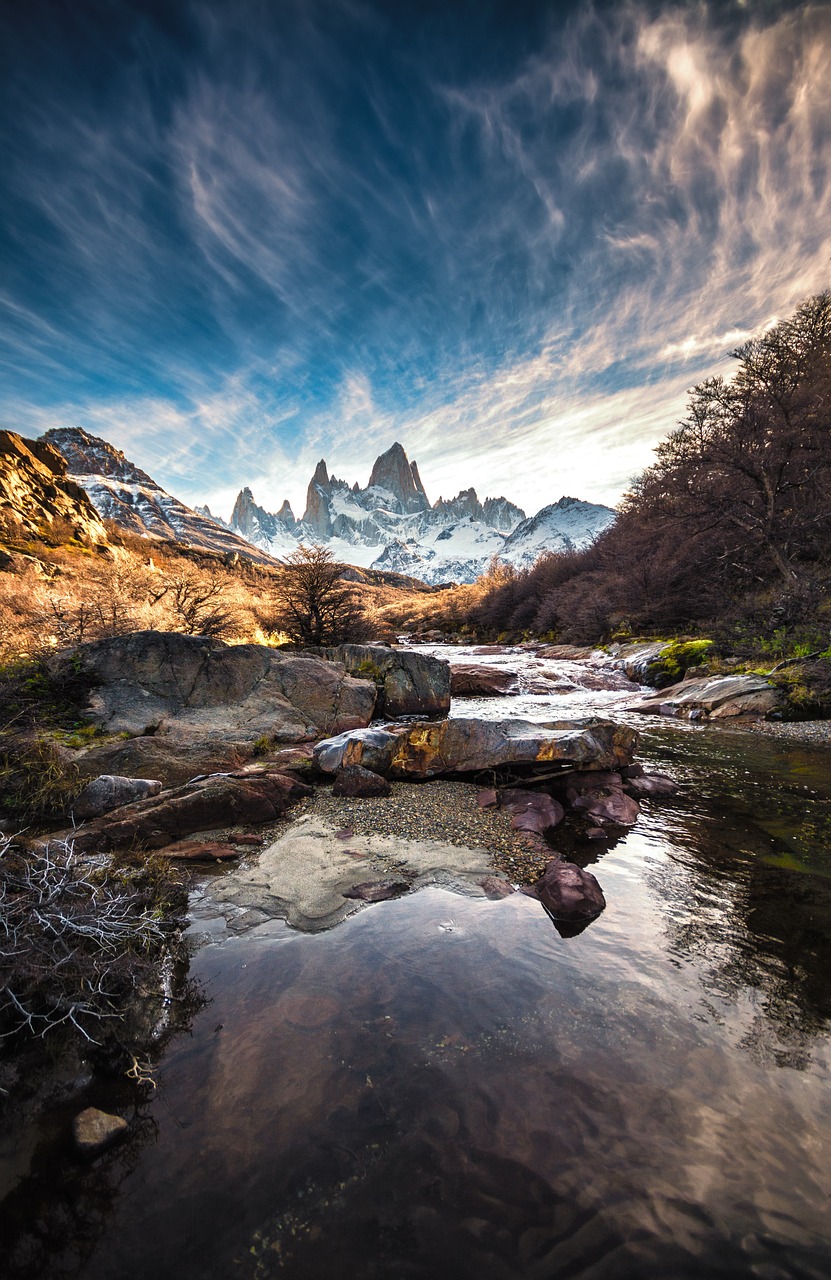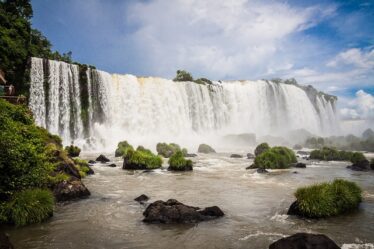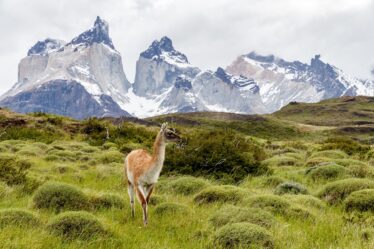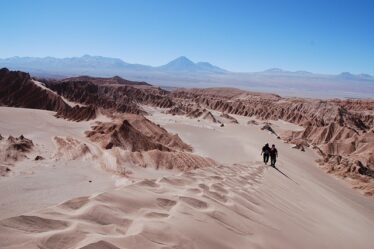
Patagonia, a vast region shared by Argentina and Chile, stretches across the southernmost reaches of South America. It is a land of staggering beauty, characterized by dramatic landscapes, diverse ecosystems, and a sense of untamed wilderness that captures the imagination of adventurers and nature enthusiasts alike. This article delves into the history, geography, culture, and attractions of Patagonia, offering a comprehensive guide to this enchanting part of the world.
Geography and Climate
Patagonia spans approximately 673,000 square kilometers in Argentina and 240,000 square kilometers in Chile, encompassing a wide variety of terrains. From the Andes mountains to the east, the arid steppes and grasslands in the central region, and the rugged coastline along the Atlantic Ocean in the west, Patagonia’s geography is as diverse as it is vast.
The Andes
The Andes mountain range forms the backbone of Patagonia, creating a natural border between Argentina and Chile. These mountains are home to some of the region’s most iconic peaks, including Mount Fitz Roy and the Cerro Torre. The Andes also house numerous glaciers, such as the Perito Moreno Glacier, which is one of the few advancing glaciers in the world.
The Steppes
East of the Andes lies the Patagonian steppe, a seemingly endless expanse of arid plains and grasslands. This region is sparsely populated and features a harsh, windy climate. Despite its desolation, the steppe supports a surprising array of wildlife, including guanacos, rheas, and the elusive puma.
The Coastline
Patagonia’s Atlantic coastline is rugged and dramatic, with towering cliffs, hidden coves, and sandy beaches. The Valdés Peninsula, a UNESCO World Heritage site, is renowned for its rich marine life, including southern right whales, orcas, and Magellanic penguins.
Climate
The climate of Patagonia varies significantly from one area to another. The western part, influenced by the Andes, tends to have a temperate and wet climate, with significant rainfall and snowfall in the higher elevations. In contrast, the eastern steppe is characterized by arid conditions, with much less precipitation. The coastal areas experience a milder maritime climate, though strong winds are a common feature throughout the region.
History
Early Inhabitants
Patagonia’s history dates back thousands of years, with evidence of human habitation as early as 10,000 BCE. The region was originally inhabited by indigenous peoples such as the Tehuelche and Mapuche. These groups were hunter-gatherers, relying on the abundant wildlife and natural resources of the land.
European Exploration
The first Europeans to explore Patagonia were the Spanish in the early 16th century. Ferdinand Magellan, the Portuguese explorer, was one of the first to navigate the region’s treacherous waters, including the strait that now bears his name. Over the following centuries, Patagonia remained largely unexplored and uncolonized due to its harsh climate and remote location.
Modern Settlement
It wasn’t until the late 19th and early 20th centuries that Patagonia saw significant European settlement. Immigrants from countries such as Italy, Wales, and Germany established agricultural communities, particularly in the fertile valleys of the Andean foothills and along the coast.
Culture
Patagonian culture is a rich tapestry woven from the threads of its indigenous heritage and European influences. The region’s isolation has fostered a unique cultural identity, characterized by a strong connection to the land and a spirit of self-reliance.
Indigenous Heritage
The indigenous peoples of Patagonia have left an indelible mark on the region’s culture. Their traditional practices, languages, and art forms continue to be celebrated and preserved. The Mapuche, in particular, have a vibrant cultural presence, with festivals, music, and crafts that reflect their deep connection to the land.
European Influence
European settlers brought with them their customs, languages, and traditions, which have been integrated into the Patagonian way of life. The Welsh settlements in Chubut province, Argentina, for instance, are known for their distinctive architecture and the annual Eisteddfod festival, celebrating Welsh culture.
Attractions
Patagonia offers a wealth of attractions for visitors, from natural wonders to cultural experiences. Here are some of the must-see destinations in the region.
Argentina
Perito Moreno Glacier
Located in Los Glaciares National Park, the Perito Moreno Glacier is one of Patagonia’s most iconic sights. This massive glacier spans over 250 square kilometers and is renowned for its dramatic ice calving events, where huge chunks of ice break off and crash into the waters below.
Mount Fitz Roy
Mount Fitz Roy, also known as Cerro Chaltén, is a stunning granite peak that towers over the surrounding landscape. It is a popular destination for hikers and climbers, offering challenging trails and breathtaking views.
Bariloche
San Carlos de Bariloche, commonly known as Bariloche, is a picturesque city nestled in the Andes. It is famous for its Swiss-style architecture, chocolate shops, and outdoor activities, including skiing, hiking, and boating on the nearby lakes.
Chile
Torres del Paine National Park
Torres del Paine National Park is one of the crown jewels of Chilean Patagonia. The park is home to stunning landscapes, including the iconic granite towers that give the park its name, as well as glaciers, lakes, and abundant wildlife. It is a haven for trekkers, with the famous W Trek and the more challenging O Circuit.
Punta Arenas
Punta Arenas is the southernmost city on the South American mainland and serves as a gateway to the Antarctic. The city has a rich maritime history and offers attractions such as the Museo Nao Victoria, which houses a replica of Magellan’s ship, and the nearby Magellanic penguin colonies.
Chiloe Island
Chiloe Island, located off the coast of northern Patagonia, is known for its distinctive wooden churches, colorful palafitos (stilt houses), and unique mythology. The island’s culture is a blend of indigenous and Spanish influences, and it is a great place to experience traditional Chilean hospitality.
Adventure Activities
Patagonia is a playground for outdoor enthusiasts, offering a wide range of activities that take advantage of its diverse landscapes.
Hiking and Trekking
The region’s vast network of trails provides endless opportunities for hiking and trekking. From the challenging ascents of the Andes to the gentler paths of the steppe and coastline, there is something for every level of adventurer.
Wildlife Watching
Patagonia’s rich biodiversity makes it a prime destination for wildlife watching. Visitors can see everything from whales and dolphins along the coast to condors and eagles soaring over the mountains.
Water Sports
The region’s rivers, lakes, and coastline offer a variety of water sports, including kayaking, rafting, and fishing. The pristine waters provide an unparalleled backdrop for these activities.
Skiing and Snowboarding
During the winter months, Patagonia’s ski resorts come to life. Cerro Catedral in Argentina and Cerro Castor in Tierra del Fuego are popular destinations for skiing and snowboarding, attracting visitors from around the world.
Conclusion
Patagonia, straddling the southern reaches of Argentina and Chile, is a land of unparalleled beauty and adventure. Its diverse landscapes, rich cultural heritage, and myriad attractions make it a destination like no other. Whether you’re drawn to its towering peaks, vast steppes, or rugged coastlines, Patagonia promises an unforgettable experience for all who venture into its wild embrace.


